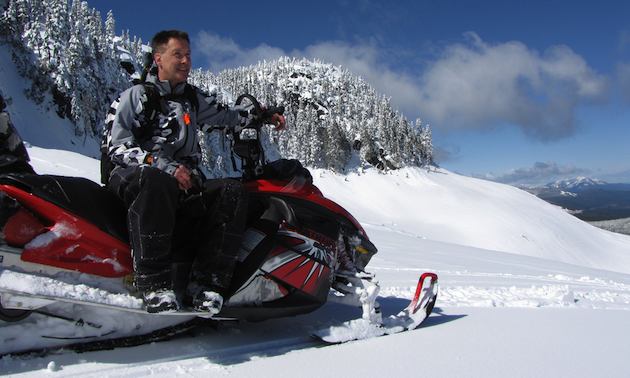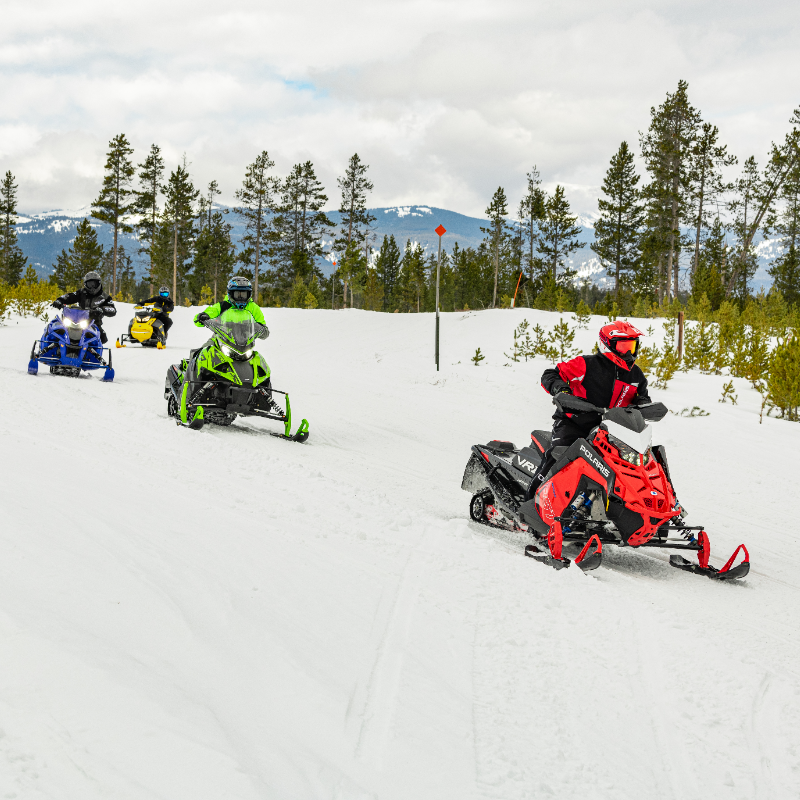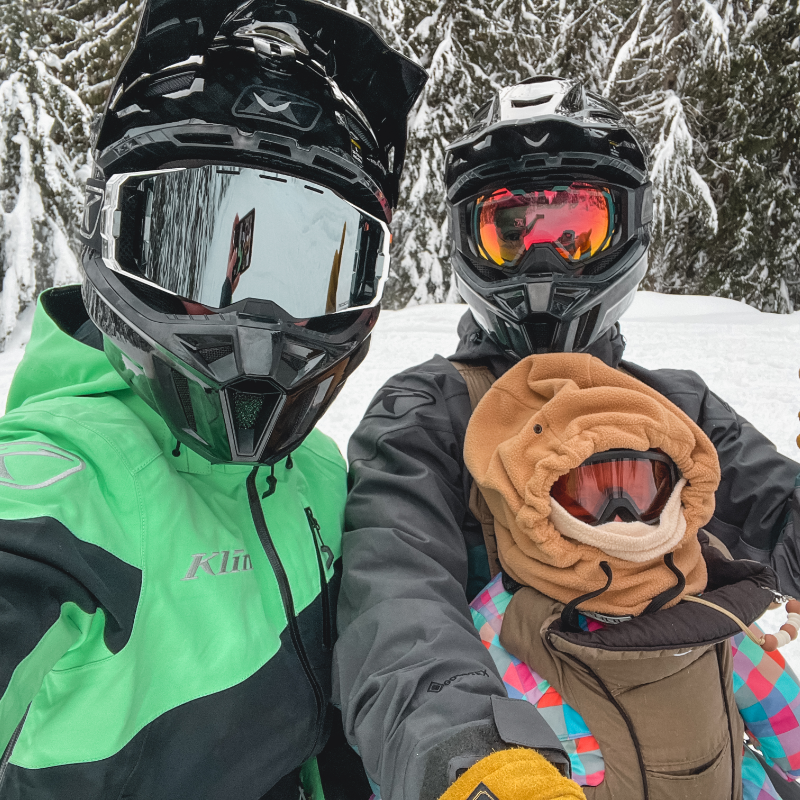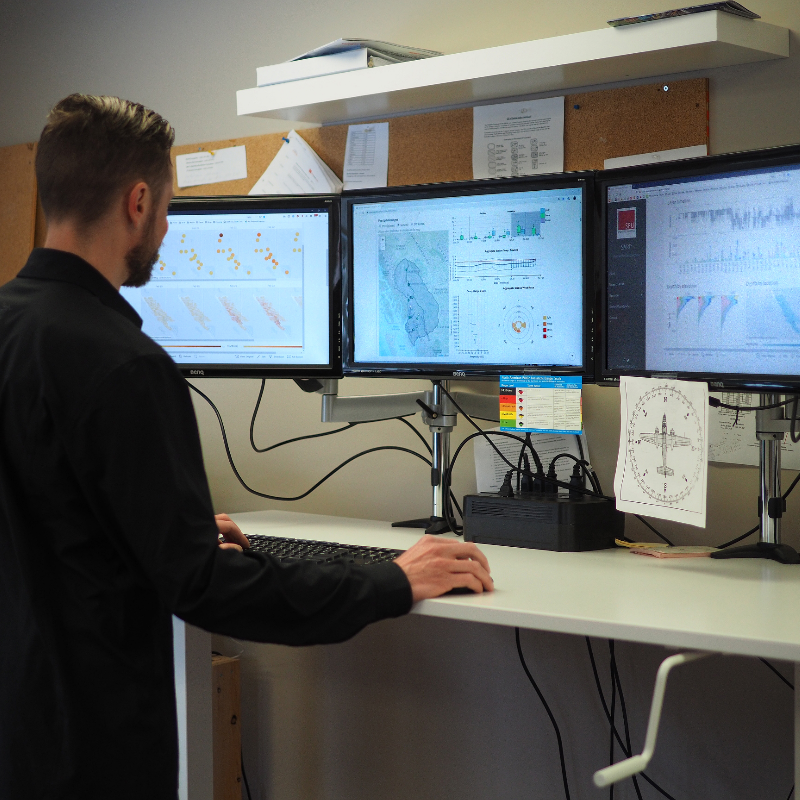Rob Hanna is a certified instructor with the BC Snowmobile Federation and owner of BC Snowmobile.com, a company that teaches recreational and industrial snowmobile operation certification and avalanche safety training across B.C.
Hanna said making it to the staging area safely begins, first and foremost, with having the appropriate vehicle for driving through tough terrain and unpredictable weather. Most snowmobilers have a truck or SUV to tow their sleds. Opting for a four-wheel-drive is a better choice than a two-wheel-drive or sport vehicle.
Many of the pitfalls of backcountry driving can be avoided with good planning, said Hanna, who has seen his share of ditch action over 40 years of traversing the wilderness by truck and sled.
“Check and monitor weather conditions and be prepared with a heavy-duty shovel, chains and heavy-duty rope for towing, in case you end up in the ditch or see others in the ditch,” he said. “What I run into the most when I see a vehicle off the road and people walking is they are ill-prepared.”
Essential safety supplies
Every rig should have a safety kit—for on the truck and on the sled. Extra warm clothing, blankets, a sleeping bag, candles, consumable liquids and non-perishable food items like energy bars are the essentials.
“If you eat snow, you run the risk of hypothermia,” said Hanna. “You have to melt it first, and heating-type candles are good for that.”
Hanna carries a device he’s fashioned from an empty soup can with a loop of wire through the top that he packs with heating candles, matches and lighters. It can be used to melt snow or burn a candle in the event of an emergency.
“It allows you to have light in the cab of a (vehicle)—a candle can make it warm enough to keep you going," he said. "It’s also important to have lots of fuel, flashlights and batteries, and a first-aid kit.”
Although cell range is usually limited in remote areas, it never hurts to carry a phone; a two-way radio, tools and flares are also part of a good kit. And when it comes to driving, an important tool is common sense.
Play it smart behind the wheel
“Lower your speed appropriately,” said Hanna. “That’s the big thing, especially on corners. Brake well before the corner, especially on blind corners. In the backcountry you don’t know who’s coming around the corner, so it’s best to err on the side of caution.”
Touch the brakes softly on a straight stretch to test the road for ice. If it’s slippery, further reduce your speed in preparation for the corners. At the same time, keep the vehicle’s momentum up on hills, accelerating before the hill to carry the vehicle up an incline, rather than getting partway up and slipping down.
“Do everything gently,” said Hanna. “Steering, braking, accelerating—do it all gently and avoid sudden changes.”
Avoiding a mishap
Poor vehicle maintenance and failure to plan are the most common reasons people get into trouble in the backcountry, said Hanna.
“Poor tires and not preparing for winter are the worst,” he said. “Someone doesn’t check the antifreeze and then comes back after a day of riding and the truck is frozen.”
If the vehicle does go off the road and the weather is bad, it’s best to stay put rather than walk for help and risk exposure.
“Tell someone of your plans, so if you don’t show up or get back in time, people can start looking,” Hanna said. “Most of the time an accident is a little of everything, but speed is also a factor, especially in four-wheel-drive vehicles. Because they have a four-by-four (people) think they can go anywhere, but when you get into ice, it doesn’t matter what you’ve got—unless you have a tank."







